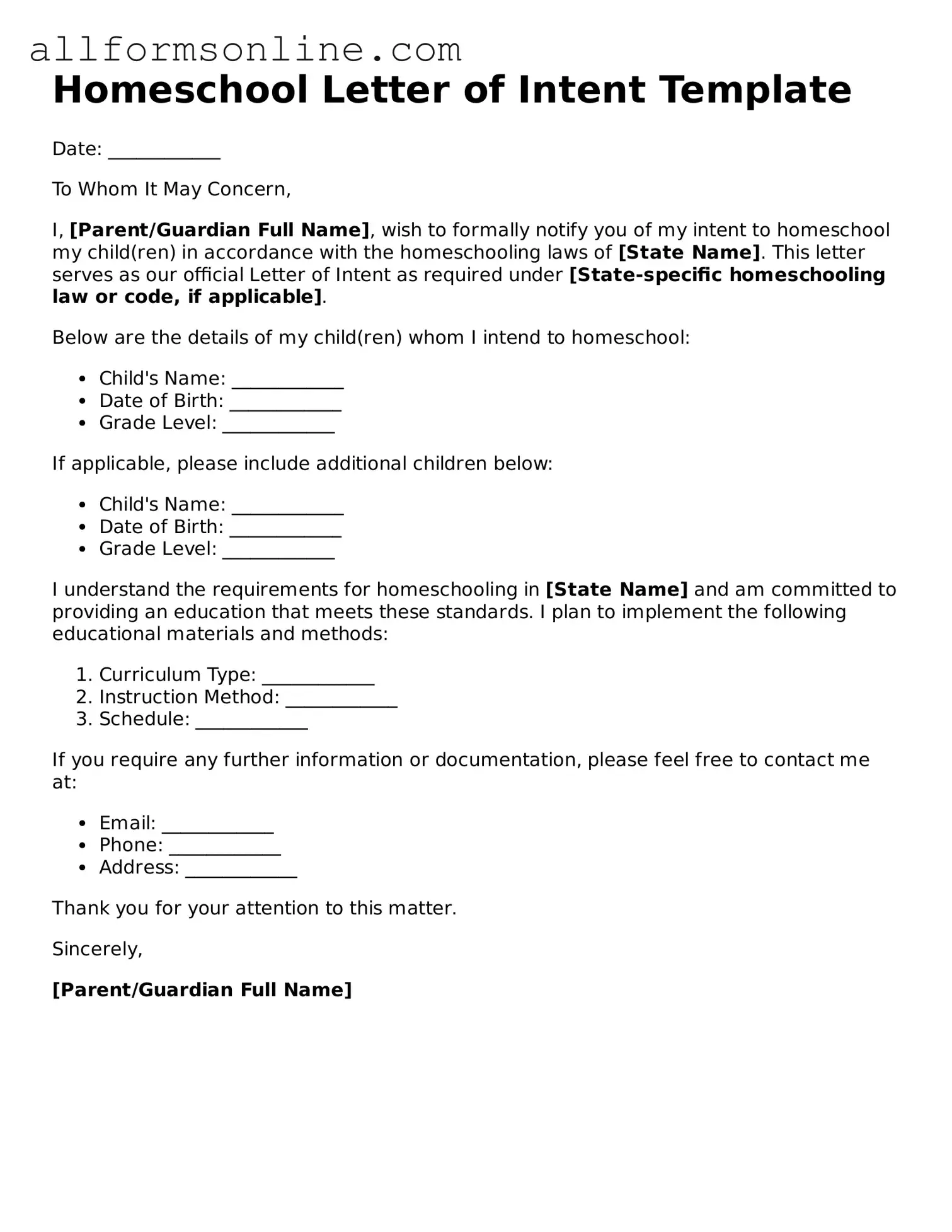What is a Homeschool Letter of Intent?
A Homeschool Letter of Intent is a formal document that parents or guardians submit to notify their local school district of their decision to homeschool their children. This letter serves as an official declaration that the parents are taking on the responsibility of their child's education outside of the traditional school system.
Who needs to submit a Homeschool Letter of Intent?
Any parent or guardian who chooses to homeschool their child must submit a Homeschool Letter of Intent to their local school district. This applies to children of compulsory school age, which varies by state. It is important to check local regulations to ensure compliance.
When should the Homeschool Letter of Intent be submitted?
The timing for submitting the Homeschool Letter of Intent can depend on state laws. Generally, it should be submitted at the beginning of the school year or when you decide to withdraw your child from a public or private school. Some states may have specific deadlines, so it's crucial to verify the requirements in your area.
What information is typically included in the Homeschool Letter of Intent?
The letter usually includes the parent's name, address, and contact information, as well as the child's name and age. Some states may require additional details, such as an educational plan or curriculum information. Always check your local guidelines to ensure you provide all necessary information.
Do I need to renew the Homeschool Letter of Intent each year?
In many cases, yes. Some states require parents to submit a new Homeschool Letter of Intent each school year, while others may only require it upon initial notification. It’s essential to stay informed about your state’s specific requirements regarding renewal or re-submission.
What happens after I submit the Homeschool Letter of Intent?
After submitting the letter, the school district may acknowledge receipt, but this varies by location. Some districts may require additional documentation or may provide guidelines for homeschooling in your area. Be prepared to follow any further instructions they provide.
Can I withdraw my child from public school after submitting the Homeschool Letter of Intent?
Yes, once you submit the Homeschool Letter of Intent, you can withdraw your child from public school. However, it’s advisable to check your district’s policy on withdrawal to ensure a smooth transition. Keep records of your correspondence with the school.
What if I don’t submit a Homeschool Letter of Intent?
Failing to submit a Homeschool Letter of Intent may lead to legal issues, including truancy charges. Each state has laws regarding homeschooling, and not following these can result in penalties. It’s best to comply with the requirements to avoid complications.
